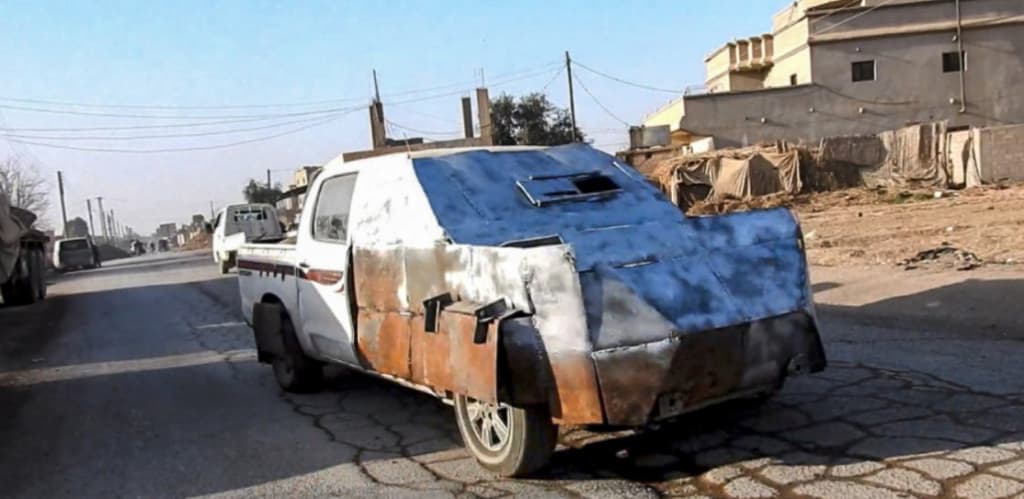Date : 28 Nov 2024
Terrorist weaponry in the Sahel: Supply
Terrorism has become a major phenomenon of political violence in the international arena, and one that national armies and law enforcement agencies are struggling to counter. In Africa, because of its perfect knowledge of the terrain, it has a decisive advantage over regular forces. To achieve his objectives, he often uses old, salvaged weapons. The terror caused by their extreme violence is placed at the center of its actions. Finally, their effectiveness lies in their ability to obtain adequate weaponry which is directly dependent on their sources of supply. Terrorist weaponry in the Sahel is thus composed of a multitude of weapons, devices and explosive vehicles transferred via trafficking. "Nowhere in the world have rebel groups had access to the same weapons as the legal forces they are fighting. Yet, today, the proportion of weapons held by terrorists is higher than those held by regular forces. The illicit trade is not the main and only cause of the instability of nations, it is more the consequence of the pre-existing absence of stability and governance." Mohamed Bazoum, président du Niger depuis 2021
Terrorist weaponry
In Africa, as elsewhere, when a man covets power, he must first obtain the means to achieve it. Terrorists are no exception to this rule.
Traditional weapons

The armies of Burkina Faso and Niger conducted a joint operation (Taanli 2 = Alliance or cohesion) on the border of the two countries from November 25 to December 9, 2021. About a hundred terrorists were killed, weapons, mostly Russian-made Kalashnikovs, several boxes of ammunition and magazines were recovered, dozens of drums of fuel were seized, and about fifteen improvised explosive devices were discovered and destroyed.
The circulation of arms in Africa takes the same routes as other illicit trafficking, favored by the porosity of borders and a high proportion of corruption among state officials.
Innovative weapons
Suggest that terrorist groups are limited to small arms is naive and unrealistic. Terrorists are always on the lookout for innovations that will allow them to carry out even more effective and spectacular acts while circumventing state security measures. Terrorist organizations have easy access to technology and weaponry via traditional markets, trafficking or the DarkNet. Technological advances “allow rebel groups to access a number of resources that in the 1960s and 1970s were available only to state forces.
Their imagination allows the creation of new weapons. The use of remote-controlled bombs, vehicle bombs and suicide bombing have been merged with the addition of vehicle protection, creating the concept of the SVBIED: an explosive vehicle with makeshift armor that allows the “driver-martyr” to rush to his target and destroy it.
Drones allow them to carry out reconnaissance of targets, but also to benefit from an air strike if necessary. The massive use of Improvised Explosive Devices (IEDs), the most homemade and least costly means, causes many losses to the various coalitions on the ground
Source of Terrorist Weaponry in the Sahel
According to Georges Berghezan, a researcher at the Groupe de recherche et d’information sur la paix et la sécurité (GRIP), there are approximately 40 million weapons in civilian hands throughout Africa, the vast majority of them illicit, including some 30 million Russian-made weapons in West Africa alone.
They usually come from the collapse of a country. But the primary source of terrorist weaponry in the Sahel is local artisanal production. Blacksmiths produce shotgun-type weapons. These are non-automatic weapons. Today, following the example of the underground Palestinian Kalashnikov factories in Lebanon and the Egyptian Kalashnikov models bearing the name of Port Said, more and more craftsmen, especially in Mali, Niger and Burkina Faso, are able to copy these weapons.
In addition, there is trafficking with highly organized groups operating in the Sahara or on an East-West axis, which is characterized by what is called “poly-trafficking” because they combine weapons with other products. This traffic is accompanied by a more popular but more accessible one, called “ant trafficking”, which is often mixed with the trafficking of migrants, which is very active in border areas.
Finally, the major source of illicit weapons is trafficking from the arsenals of security forces. In Africa, security forces lose or sell their weapons to armed groups, criminals and jihadists. The origins of industrial weapons are very diverse. First, it is regional, the support of a neighbouring state to rebels. The major traffickers, who were known some twenty years ago, are inactive today.
It is an import from at least 25 countries outside the African continent. Some countries have played a very important role in the past: Ukraine, Bulgaria, Iraq, and Poland before it joined the European Union. Today, as in the past, it is Russia that holds the first place on the whole continent followed closely by Iran which is rather active towards the east of Africa. Recently, a major seizure of Turkish rifles in Lagos (Nigeria) shows that Turkey is emerging as a major arms exporter in this illicit market.